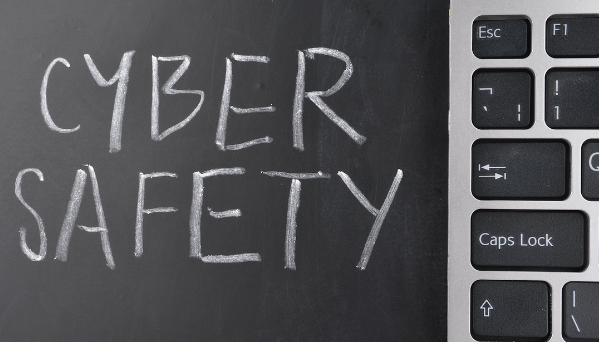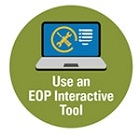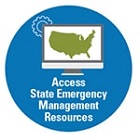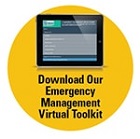|
Threading Cyber Safety Into School Emergency Operations Plans: Building Cyber-Safe School Settings and Systems

Today’s digital world holds exciting possibilities for K-12
students. Virtual platforms, programs, and tools
offer innovative learning experiences, greater
accessibility to content, and opportunities for
global and local connection. In commenting on the reality that 50 percent of teens report using the Internet “almost constantly,” Tamara Sobel, a REMS TA Center subject matter expert and media education specialist, indicates that “digital screen media isn’t just something kids use sometimes—it is basically their culture and life.”
While digital advancements have much to add to the
lives of students, they come with increased threats and
vulnerabilities. The
K12 Security Information eXchange’s The State of K-12 Cybersecurity: Year in Review—2022 Annual Report shows the growing occurrence of cyberattacks against schools throughout the nation. Federal protections, such as the
Children’s Internet Protection Act, exist to help shield young people from harmful online content but are usually not enough to keep students free from all forms of online harassment and abuse.
As cyberbullying, information sharing, sextortion, phishing schemes, hoax threats, and other online harms continue to evolve, schools, school districts, community partners, and families must remain vigilant. Spreading awareness about emerging threats and taking steps to implement cyber safety strategies into existing emergency operations plans (EOPs) will help K-12 schools maintain safe and supportive learning environments for all students.
Cyber Safety Measures and EOPs

Not to be confused with cybersecurity (which refers to protecting information and communication systems), the term “cyber safety” refers to the activities or processes taken to protect people and communities from cyber incidents or online harms. The consequences of cyber safety incidents carry the potential to produce other forms of harm and emergency. As Sobel explains, “When kids are affected negatively in their emotional lives, they can act out either in their digital worlds or in real life…. by cyberbullying, potentially violent threats or action towards other students or school staff, being destructive to school property, [or] even attack school information systems.”
One of the best ways to integrate cyber safety measures is to develop a Cyber Annex for your school’s EOP. Since cyber safety is a complex and evolving issue, creating and maintaining a Cyber Annex requires careful consideration from core planning teams.
To get started, planning teams can follow the six-step planning process outlined in the
Guide for Developing High-Quality School Emergency Operations Plans
and The Role of Districts in Developing High-Quality School Emergency Operations Plans: A Companion to the School Guide. Schools, school districts, and community partners can also reference the REMS TA Center’s
NEW Cyber Safety for K-12 Schools and School Districts
and Digital Health, Safety, and Citizenship
web pages full of curated resources for multiple cyber safety considerations.
To protect schools from digital and real-world threats, schools and school districts should consider implementing the following cyber safety measures into their practices and Cyber Annex:
-
Provide digital citizenship instruction and spread cyber safety awareness. Students and faculty may not know how to protect themselves. Intentional, age-appropriate education can go a long way in protecting individuals and the school community.
-
Encourage mental health awareness. Much of the complexity of cyber safety incidents involves their ability to affect student wellness. Teachers, staff, and faculty should know how to identify
signs of bullying and abuse
and should create a culture of safe sharing and reporting. Schools can use tools such as the
Being Tech-Smart Facilitator’s Guide to instruct students in Internet safety and mental and emotional health awareness. As Sobel further explains, “If the mental health of all students is not a concern, the school climate can suffer, and all students and staff may be at risk. A mentally healthy student population is a safer environment for all.”
-
Vet approved platforms and develop safe user procedures. School communities cannot control all digital interaction, but they can govern the platforms and procedures used at the school. Most cyberbullying, interactions with inappropriate content, sextortion, and ransomware incidents occur through social media, messaging services, and email. Administrators can research approved platforms, select ones that offer the most security, and establish rules to protect the privilege of safe virtual interactions.
-
Establish multi-factor authentication (MFA) across campus. The Cybersecurity and Infrastructure Security Agency notes that “MFA increases security because even if one authenticator becomes compromised, unauthorized users will be unable to meet the second authentication requirement and will not be able to access” the targeted space. Although implementing MFA requires training the school community, MFA’s protective measures are worth the investment.
In short, the high stakes created by cyber safety incidents demand that K-12 schools consider virtual and emotional resilience strategies. You can find additional resources and information on this topic from the REMS TA Center below.
REMS TA Center Resources
If you have created or used tools and resources to address cybersecurity and cyber safety at your campus, please submit them for inclusion in our REMS TA Center Tool Box.
If you have any questions or need additional assistance, please contact the REMS TA Center at 1-855-781-REMS [7367] or via email at info@remstacenter.org.
|











